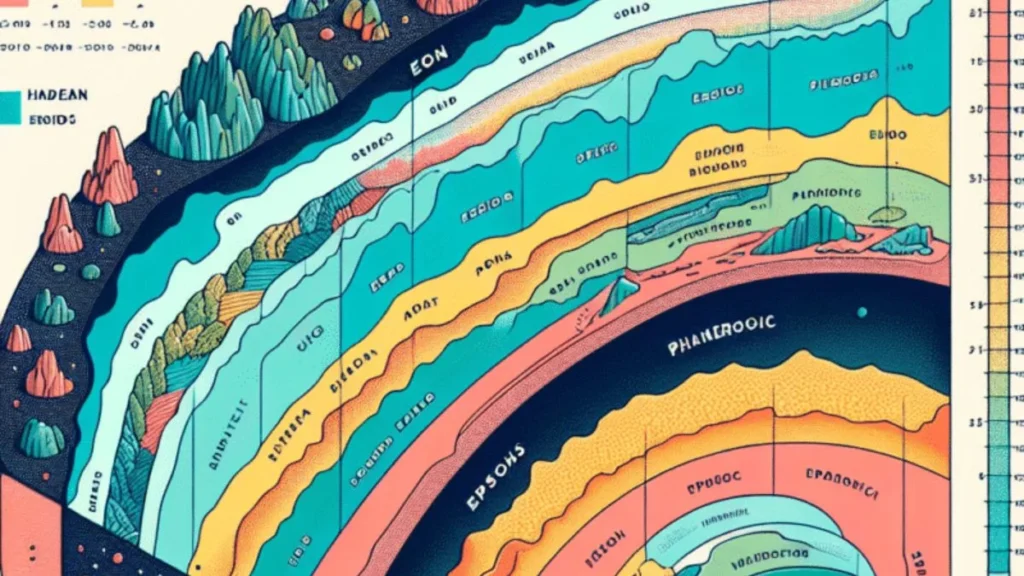
Contents
- 1 Introduction
- 2 Understanding the Geological Time Scale
- 3 Components of Eons inside the Geological Time Scale
- 4 Key Developments During Each Eon
- 5 Conclusion
- 6 FAQs about What is the Largest Unit of the Geological Time Scale
Introduction
The largest unit of the geological time scale is called an eon. Eons constitute the broadest divisions of geologic time, encompassing billions of years and serving because the foundational chronology for understanding Earth history. There are 4 primary eons: the Hadean, Archean, Proterozoic, and Phanerozoic. Each of those eons is characterized by using widespread geological, atmospheric, and organic modifications that have shaped the planet as we understand it today. Eons are similarly subdivided into eras, durations, epochs, and a while, imparting a structured framework for the geological and life history. Understanding these time spans is critical for geologists, paleontologists, and other earth scientists, as it enables contextualizing the improvement of Earth is surface and lifestyles.
Understanding the Geological Time Scale
What Is the Geological Time Scale?
The geological time scale is a gadget utilized by geologists and other earth scientists to explain the timing and relationships of events in Earth is records. It offers a framework that categorizes geological and organic events primarily based on huge changes and fossil statistics through the years. The time scale is split into numerous hierarchical levels: eons, eras, durations, epochs, and a while, each representing increasingly shorter time intervals.
Structure of the Geological Time Scale
Within the geological time scale, the biggest divisions are the eons, which describe significant stretches of time marked by means of particular geological and organic features. Following eons, the second and largest divisions are eras, intervals, epochs, and, ultimately, ages. This hierarchical shape permits scientists to communicate complex temporal relationships successfully.
Components of Eons inside the Geological Time Scale
A Closer Look at Eons
As emphasized earlier, the geological time scale includes four identified eons:
- Hadean Eon (approx. 4.6 to 4 billion years in the past): This eon marks the time from Earth is formation till the cooling of its surface, main to the formation of the crust.
- Archean Eon (approx. 4 to 2.Five billion years ago): Characterized by the formation of the first continental crusts and the appearance of simple lifestyles forms, typically prokaryotes.
- Proterozoic Eon (approx. 2.5 billion to 541 million years ago): This length noticed the buildup of atmospheric oxygen and the emergence of more complicated existence forms, consisting of multicellular organisms.
- Phanerozoic Eon (approx. 541 million years ago to provide): This eon consists of the time of ample fossil evidence, showcasing rapid permutations of lifestyles paperwork throughout three principal eras: Paleozoic, Mesozoic, and Cenozoic.
Importance of Eons
Eons function a critical framework within the geological time scale. They permit scientists to research and interpret Earth is improvement over substantial time frames. This is crucial for knowledge the evolution of the planets geology and ecosystems, which is instrumental in fields which include paleontology, archaeology, and environmental technology.
Key Developments During Each Eon
Hadean Eon
The Hadean Eon marks Earth is early life, where a molten floor finally cooled to shape a strong crust. This period was essential for the advent of the planet is initial surroundings and oceans, placing the level for destiny geological methods.
Archean Eon
The Archean Eon witnessed the emergence of the primary microbial lifestyles paperwork. The Earth is crust stabilized, leading to the formation of continental landmasses and the earliest recognized organisms, more often than not unicellular prokaryotes like bacteria and archaea.
Proterozoic Eon
During the Proterozoic Eon, tremendous biological tendencies occurred, which include the arrival of eukaryotic cells and the “Great Oxidation Event,” which dramatically altered the planet environment. This eon laid the basis for multicellular existence.
Phanerozoic Eon
The Phanerozoic Eon is marked by an explosion of biodiversity known as the Cambrian Explosion, which brought about the emergence of complex existence forms. It includes the age of dinosaurs, large extinction activities, and the upward push of mammals and birds into the cutting-edge ecosystems we look at nowadays.
Conclusion
The geological time scale is a essential tool for geologists and different Earth scientists, with eons representing the most important devices of time. Understanding the complexities of these eons allows researchers to find the problematic history of our planet and its life forms, facilitating insights into how Earth is systems feature and evolve over trillions of years. By appreciating this scale, we can better realize our planet past, present, and future.
FAQs about What is the Largest Unit of the Geological Time Scale
What is an eon in geological terms?
An eon is the most important department of geological time, encompassing loads of tens of millions to billions of years. Eons are subdivided into eras, which offer in addition chronological detail on Earth is history.
How many eons are there inside the geological time scale?
There are 4 identified eons in the geological time scale: Hadean, Archean, Proterozoic, and Phanerozoic.
What marks the transitions among eons?
Transitions among eons are marked through big geological and biological shifts, which include modifications in Earth is weather, surroundings, and the emergence of complex lifestyles paperwork. Such transitions often replicate important events in the fossil file.

Say Job City in Pakistan for today latest jobs opportunities in private and Govt departments. View all new Government careers collected from daily. sayjobcity.com


